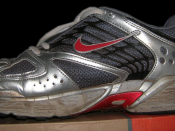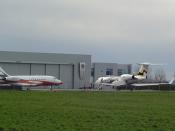Introduction
The twenty-first-century realities of globalization, rapid changes in technology, increasing competition, a changing workforce, changing market and economic conditions, and developing resource shortages all increase the complexity of modern management. Whereas strategic planning was a competitive advantage in the past decade, it is a necessity of global thinking in this century. Planning strategically is certainly a new requirement in the global business world. In order to survive the new business challenge, global thinking and practice must permeate all corporate activities. Successful companies are, of course, the first to consider the global marketplace as their arena for competition. According to Peters (1993), strategic management has become a vital part of most, if not all, organizations. "Almost all organizations of any reasonable size have some kind of strategic planning."
The athletic footwear and apparel industries are very attractive, providing an excellent opportunity to create above average returns. Manufacturers such as Adidas, New Balance, Nike, Puma, and Reebok are only the few successful companies in the business.
More important behind this success is the way the companies implement and perform strategic management considering internal and external environment approaches. The athletic footwear, apparel and equipment industry is keenly competitive in the United States and on a worldwide basis.
The emergence of the different apparel corporation has mirrored the sky-rocketing popularity of sports, athletes, and personal athletic activity in the late twentieth century. These brands had fueled a great deal of this popularity, particularly by employing athletes as product spokespeople and infusing the world of sports with vast amounts of capital.
Nike experienced tremendous growth between the early 1970s and late 1990s, dominating the global athletic footwear and apparel market. Its success had been fueled by the use of low wage labor in developing countries, accompanied by highly acclaimed marketing strategies and advertising campaigns.



excellent
quite well written and have proper structure
0 out of 0 people found this comment useful.